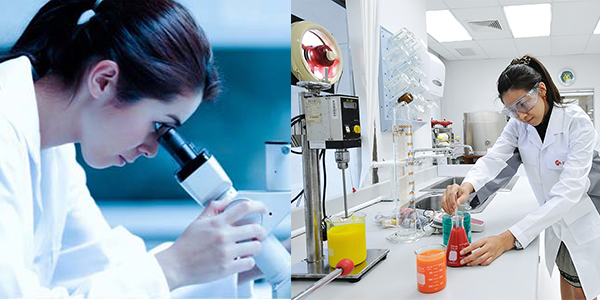See What Is Trending In The Life Science Lab Equipments!

ife science and healthcare are relative and the growth is mutual for both. It is studied healthcare spending is expected to grow by 5.2% in 2018. The demand for personalized medicines for the aging population and the growth in the diagnostic services are reasons for this unprecedented expansion in both the sectors. The latest research in this sector involves molecular imaging and next gen DNA sequencing. Despite the automation and the great work done in this sector, there is no considerable growth in size. The growing cost has affected the industry yet the lab technicians are holding on to their best. The dynamic market scenario has led to the major trends in the lab instrumentation sector.
Small labs with automated equipment
Small labs having limited staff invest more on automated lab instruments. Small instruments are developed by the support of robotics and fluidics components. Earlier valves and pumps go into the bottom or rear of the equipment plumbing the dispensing device. It is nothing but an automated probe that delivers the fluids into the plate. The latest trend is the reduced size of the fluidic components so that it settles above the probe directly.
The robots are powered using the integrated direct drive servomotors. Earlier the motors were attached to the assembly using typical couplings but now it is integrated directly into the assemblies. In the new model, the parts have multiple uses and hence the number is reduced drastically making the equipments handy with better functionality. The modular designs make is simpler to function.
Better throughput
To achieve better throughput the manufacturers have to push the design of the motion systems to function quicker. In order to move the operations from one stage to another faster, the miniature systems accelerate, settle and decelerate quickly. Stages are designed keeping in mind the linear motions gearings to meet the OEM specifications and footprints. As a result the throughput is enhanced. In combination with modularity the lab equipment come with embedded test potential. The robotics loaded into the system come with multiple test station that handles procedures earlier done by people. It reduces the chance of wrong testing or working on wrong samples.
Small sample size
The reagents and chemicals used are expensive and by using small sample size the potential to conserve cost is higher. This has forced manufacturers to cut down on the cost of the equipment and as a result the processing samples have been reduced from test tube size to those of tiny wells fitted in microtiter trays. Miniature positioners are used to place the sample on the tray in a particular manner. Automated analyzers use the high pressure handling valves altering the small sample size and reagent production. The pressure used is 30 psi but could be increased to 50 to 80 psi with the replacement of solenoid coils in the actuators. The Piezo devices provide more force when compared to solenoids providing a high pressure environment for higher throughput. The latest valve design has cut down the sample contamination. The valve closes the fluid path in between the reagents and the samples thereby resulting in a limited throughput to the other sample.
Modularity
It is a complex subject as it comprises of function instruments that comes with the benefits of both laboratory levels and OEM. Modularity for OEM means developing new systems aster by repurposing industry tested designs into the next gen equipments. Moreover reducing the design process leads to speedy designs supported by FDA cycle and as a result there are fewer field service issues. The fluidic systems and motion are the primary candidates for this type of assemblies and are designed by OEM and solely rests on their competency. Modularity for laboratories can be defined as instruments that expand their functionality and potential to communicate among them and maintaining the easiness facilitating the lab staff to improve productivity.
Making fluidics simpler
Thanks to the robotics the lab samples are shrinking in size and the complex networking of tubing and connecting to points are now made easier. The manifolds are told replaced with integrated piping. Diagnostic labs cannot allow the failure of instruments with the samples, now with less tubing the chance of failure is also restricted.





